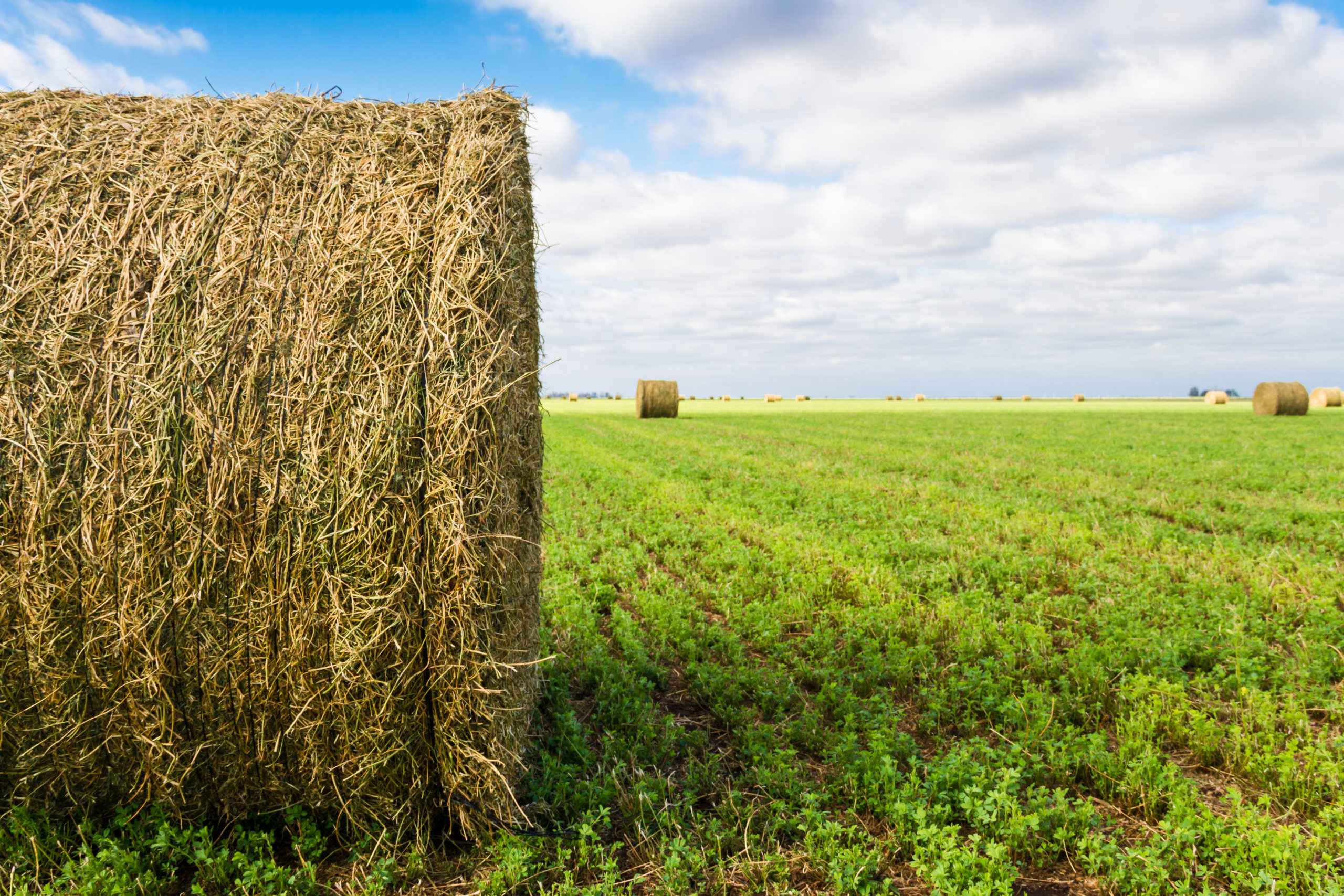By Libby Rens, PhD
Anyone can tell you: Alfalfa is a BIG potassium user
An average 3.5-ton alfalfa harvest will remove around 220 lbs of K2O per acre (WSU, UCANR). Even more, if you yield over 4 tons per acre! This is in part because of alfalfa’s large biomass production, and the entire aboveground portion of the plant is removed during harvest, leaving little biomass to be recycled back into the system.
Recommended potassium rates will vary based on environment, soil, production, and more. In low potassium and high CEC soils, Purdue recommends up to 300 lbs of K2O per acre to support plant growth and yield for each alfalfa season. In a different region, the University of Minnesota recommends up to 380 lbs K2O per acre in conditions with low soil K and high projected yield.
Including Manure as a Nutrient Source
It can be tricky to balance nutrient application with crop need, especially using a variable fertilizer source like manure. Washington State University emphasizes that “Organic fertilizer sources vary widely in nutrient concentration, availability, and cost per unit of nutrient due to factors such as the material of origin, processing requirement, unit (package) size, and transportation distance.”
For example, to satisfy 300 lbs of K2O per acre, it would take about 7.5 tons of chicken litter per acre. A chicken litter application at this level would provide excess levels of nitrogen and phosphorus, two nutrients regulated for surface water contamination and leaching. The National Organic Program (NOP) states that manure applications “…must not exceed agronomic application rates, which means the amount applied must be less than or equal to the requirements of the crop.”
An application of 7.5 tons of chicken litter per acre would supply around 450 lbs of P2O5. An estimated 50-100% of this phosphorus is available within the first year of application, which significantly exceeds most estimated crop requirements of 165 lbs of P2O5 per acre (No-Till Farmer). The excess P2O5 is highly susceptible to contamination of surface waters. This chicken litter application also significantly exceeds nitrogen requirement, as alfalfa relies on N-fixing bacteria for mineral nitrogen.
So now what? How do you meet crop nutrient requirements without applying excess nitrogen or phosphorus?
You Can Still Have It All!
The solution to managing nutrient requirements while reducing contamination is to supply manure or chicken litter to meet, but not exceed, phosphorus needs. This method will not supply sufficient potassium, in which case a secondary potassium source will be required to meet crop needs. OMRI Listed Intrepid Potash (MOP, 0-0-60) is an easy addition as it is the most common and readily available source of potassium.
1-Plan ahead: Tissue test this year to get an idea for next year – refer to a test from peak production during last season – was the crop getting enough nutrition?
2-Soil test – Understand the level of potassium already in your soil
3-Test Test Test your manure before applying! – Manure sources have variable nutrient analyses based on source, bedding, time, processing, location, etc.
4-Calculations – Calculate the manure rate needed to satisfy nutrients without applying excessive nitrogen or phosphorus. Then calculate the gaps you have for other nutrients, like potassium, that you will need to supplement with another fertilizer source.
Example (#MathTime):
Your soil test comes back recommending 140 lbs P2O5 per acre and 280 lbs K2O per acre. The average chicken litter analysis is 3-3-2, and OMRI Listed Intrepid Potash is 0-0-60. How much chicken litter and OMRI-Listed Intrepid Potash should you apply?

Work Through the Fertility Plan with Your Agronomist
Creating a balanced fertility plan using manure and OMRI-listed Intrepid Potash is an excellent way to meet alfalfa’s potassium requirements without the negative impacts of leaching or runoff of excessive nitrogen and phosphorus. The basic principles of plant nutrition are the same for organic and conventional crop production. Plants uptake potassium as the positively charged cation K+ regardless of the fertilizer source. The potassium in OMRI Listed Intrepid Potash (MOP, 0-0-60) is immediately available to the plant for easy uptake.

